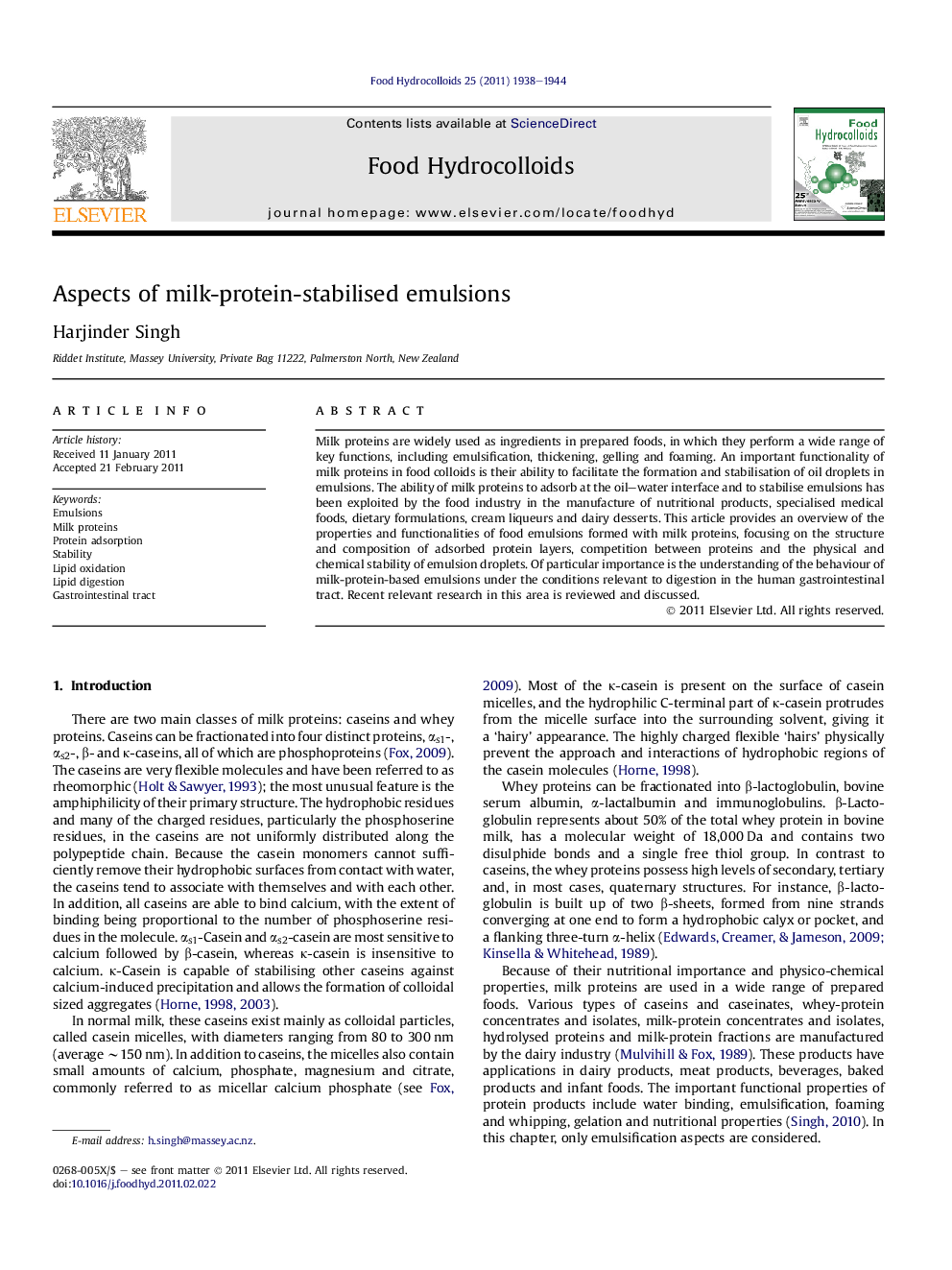| Article ID | Journal | Published Year | Pages | File Type |
|---|---|---|---|---|
| 605650 | Food Hydrocolloids | 2011 | 7 Pages |
Milk proteins are widely used as ingredients in prepared foods, in which they perform a wide range of key functions, including emulsification, thickening, gelling and foaming. An important functionality of milk proteins in food colloids is their ability to facilitate the formation and stabilisation of oil droplets in emulsions. The ability of milk proteins to adsorb at the oil–water interface and to stabilise emulsions has been exploited by the food industry in the manufacture of nutritional products, specialised medical foods, dietary formulations, cream liqueurs and dairy desserts. This article provides an overview of the properties and functionalities of food emulsions formed with milk proteins, focusing on the structure and composition of adsorbed protein layers, competition between proteins and the physical and chemical stability of emulsion droplets. Of particular importance is the understanding of the behaviour of milk-protein-based emulsions under the conditions relevant to digestion in the human gastrointestinal tract. Recent relevant research in this area is reviewed and discussed.
Graphical abstractFigure optionsDownload full-size imageDownload as PowerPoint slide
